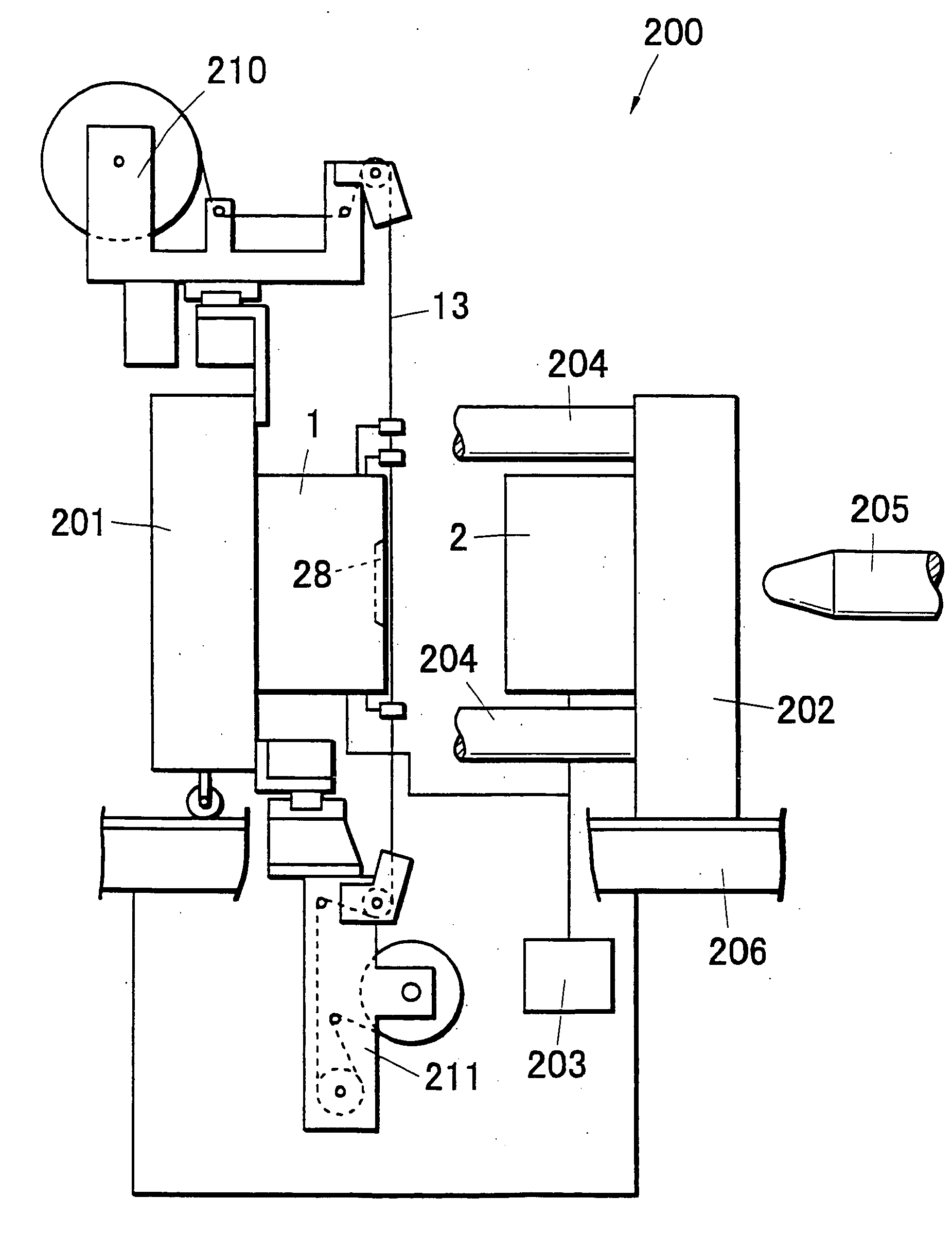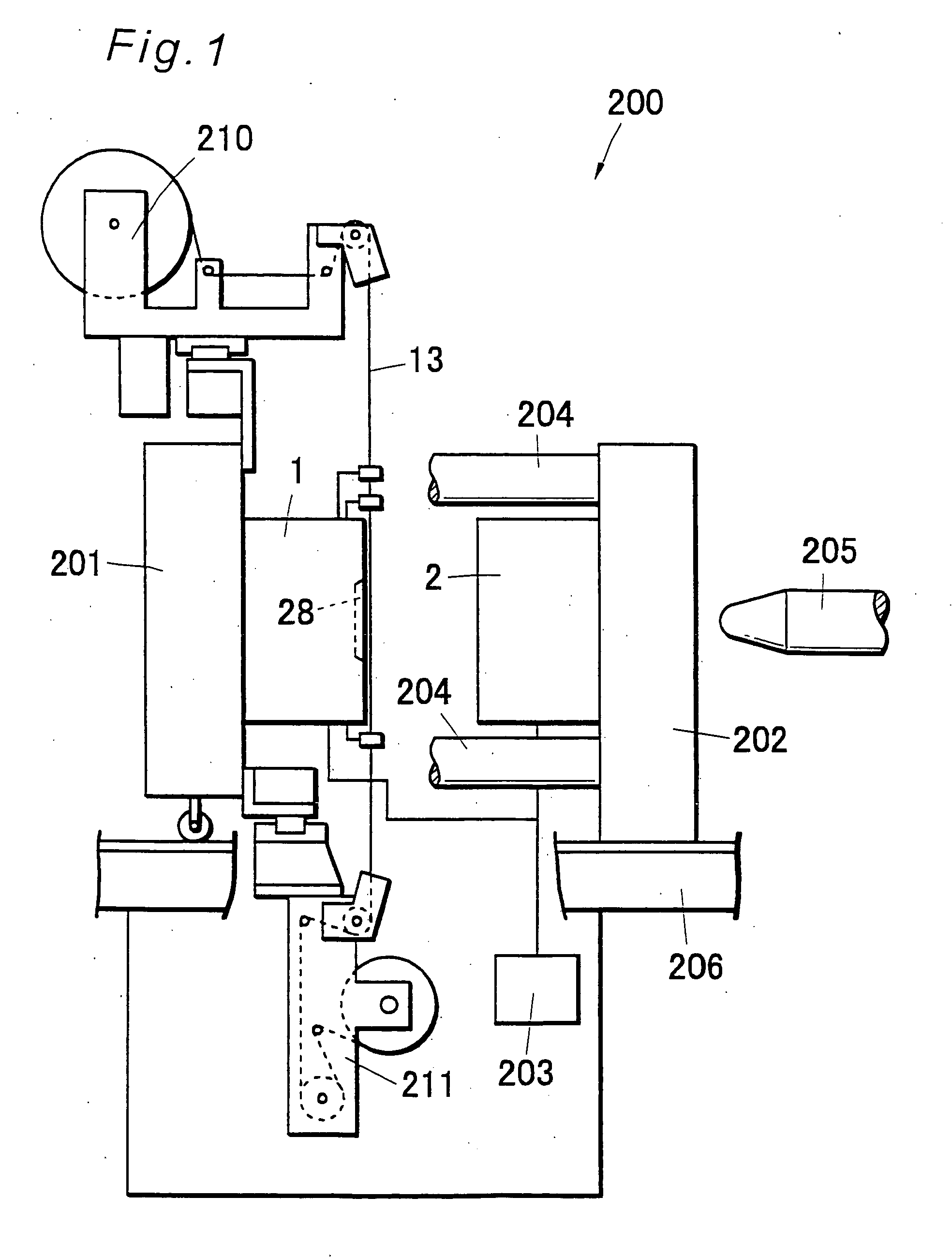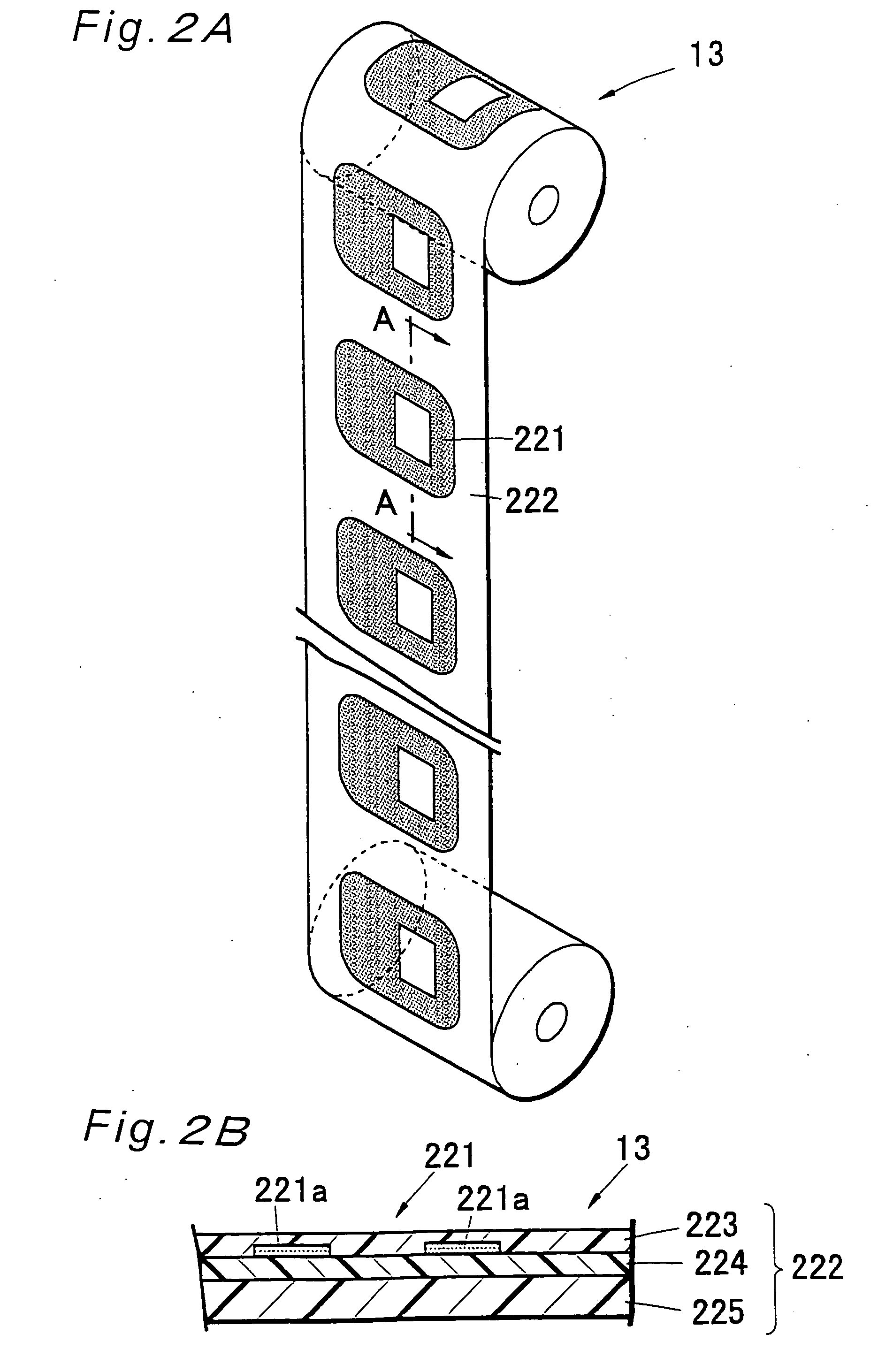Mold for in-mold decoration
a technology of in-mold decoration and molds, which is applied in the field of molds for in-mold decoration, can solve the problems of increasing the wasteful use of decorating films, increasing the manufacturing cost of molds, and the inability to meet the short delivery period required in mold manufacturing, so as to reduce the need for recessing, shorten the time necessary for mold manufacturing, and reduce the effect of production cos
- Summary
- Abstract
- Description
- Claims
- Application Information
AI Technical Summary
Benefits of technology
Problems solved by technology
Method used
Image
Examples
first embodiment
[0066]FIG. 1 is a view showing the outlined configuration of an in-mold decorating apparatus on which a mold for in-mold decoration according to a first embodiment of the present invention is mounted. As shown in FIG. 1, an in-mold decorating apparatus 200 is composed of a movable-side mold 1 mounted on a movable plate 201, a stationary-side mold 2 mounted on a stationary plate 202, and an injection nozzle 205 for injecting molten resin to a cavity formed between both the molds.
[0067] In the present embodiment, the stationary plate 202 is fixed to a frame 206, and a tie bar 204 fixed to the stationary plate 202 guides the movable plate 201, which moves so as to come into contact with or go away from the stationary plate 202.
[0068] By moving the movable plate 201, the parting face of the stationary-side mold 2 and the parting face of the movable-side mold 1 are brought into tight contact with each other, which forms a closed mold state in which molding portions of the molds (a cavi...
second embodiment
[0132] Description is now given of molds for in-mold decoration according to a second embodiment of the present invention.
[0133] Molds for in-mold decoration 101, 102 shown as the second embodiment in FIG. 19 and FIG. 23 are the molds for use, for example, in the in-mold decorating apparatus shown in FIG. 1, which are purposed to fulfill molding and decoration processes simultaneously on the surface of a thin plate-shaped molded article. A movable-side mold 101 shown in FIG. 19 and a stationary-side mold 102 shown in FIG. 23 are each composed of cavity-forming blocks 103, 131 having two pieces of molding-use cavities 128, 138 into which a decorating film is inserted and mounts 107, 110 each for fixing two pieces of the cavity-forming blocks 103, 131.
[0134] In the molds 101, 102 according to the present embodiment, such pockets for fitting the nests thereinto as would be provided in the prior art are not provided in the mounts while, instead, the mounts and the cavity-forming block...
PUM
| Property | Measurement | Unit |
|---|---|---|
| height | aaaaa | aaaaa |
| clamping force | aaaaa | aaaaa |
| thickness | aaaaa | aaaaa |
Abstract
Description
Claims
Application Information
 Login to View More
Login to View More - R&D
- Intellectual Property
- Life Sciences
- Materials
- Tech Scout
- Unparalleled Data Quality
- Higher Quality Content
- 60% Fewer Hallucinations
Browse by: Latest US Patents, China's latest patents, Technical Efficacy Thesaurus, Application Domain, Technology Topic, Popular Technical Reports.
© 2025 PatSnap. All rights reserved.Legal|Privacy policy|Modern Slavery Act Transparency Statement|Sitemap|About US| Contact US: help@patsnap.com



